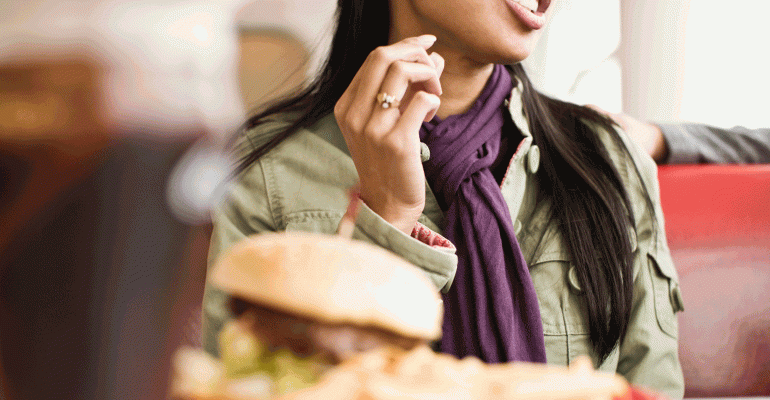Restaurant industry traffic growth fell into negative territory in the third quarter, for the first time since 2010, according to new research from The NPD Group.
To grow business in this market, restaurant operators must focus on increasing frequency of visits, particularly with lighter users, NPD said.
“To see it that negative is quite a surprise,” NPD analyst Bonnie Riggs said. “It’s about visit frequency.”
A new NPD report, “Losing Our Appetites for Restaurants,” traces the slow growth to creating heavy users, or consumers who visit restaurants three or more times per week. This group reduced overall visits to restaurants and visited fewer brands in the year ended August 2016.
But the report also revealed an opportunity to increase visits from light users, who typically visit restaurants one time per week, as well as a newly identified group NPD calls “super light” users, who visit restaurants less than one time per week.
Although they may not visit often, super-light and light users are extremely valuable customers, according to NPD. Combined, these two groups account for 47 percent of all restaurant customers in a year, and they spend more per visit than heavy users.

“The focus has been on rewarding heavy buyers,” Riggs said. “You’ve got to do this, but you’ve got to get that light buyer if you’re going to grow your business. If you could just attract one more visit from a light buyer, you could have a huge impact.”
If half of light users made just one more restaurant visit each year, NPD calculated that there would be an incremental sales increase of $1.1 billion.
When asked what would entice them to visit more, lighter users’ No. 1 response was regular discounts, NPD found. But they don’t want just any discount, Riggs said, they want a discount of their choosing. The No. 2 enticement was loyalty and rewards programs. While previous NPD studies have shown loyalty and rewards programs low on the enticement list, they have recently gained importance, Riggs said.
“That really is a tactic that can be used to attract all buyers,” Riggs said. “It’s going to cost more, but I think in the long run it will be worth it.”
Converting customers
Not content to accept slow growth as the new normal, some savvy restaurants are using data collection to look more deeply at their customers to find out what they want and how to deliver it. Executives at Dallas-based Boston’s Restaurant & Sports Bar, and Great River, N.Y.-based Lessing’s, two full-service, multi-unit operators, share how they are capturing customer data and using it to drive visit frequency.
Lessing’s targets infrequent customers via app

“Through data we receive based on checks, we can deduce what they are looking for,” said Nick Renna, Lessing’s social media coordinator. “We’re learning that more personalized, customer-driven discounts drive people.”
The company has long offered customers at the five so-called “Main Street” gastropub-style restaurants in its portfolio a standard rewards program featuring a traditional points platform, where customers earn points during visits that can be redeemed for cash rewards. With a mobile app, they are also awarding points, as well as running monthly campaigns featuring a rotating selections of rewards based on customer preferences. For example, in December, the campaign is focused on the 12 days of Christmas, and features 12 different visit rewards ranging from $15 coupons, to free Lessing’s T-shirts, to free local beer.
So far, Lessing’s has had particular success using the app to entice lighter users (which it defines as those who have not visited in the last week or month) by offering deals such as double points on a visit.
“We use [the app] to drive infrequent customers through texts and push notifications,” Renna said. “We’re seeing successful results.”
Boston’s capitalizes on customer data
Similarly, Boston’s Restaurant & Sports Bar, which has 27 U.S. locations, recently began using a data platform to gather visit information from customers who pay with a credit card.
“We’re able to use a combo of finding out who they are and using super-targeted direct mail, digital advertising to find things that resonate with them,” said Brad Bevill, Boston’s vice president of marketing and communications.
For example, Boston’s can avoid sending information about a kids’ meal deal to a customer without kids, Bevill said, or sending a deal for ribs to a customer who always orders a veggie pizza.
“We’re looking at a loyalty platform as not only a way to continue to drive frequency, but also to look at super-light users,” Bevill said. “If I can start to talk to super-light users about what brought them in before, I think I can convert them.”





